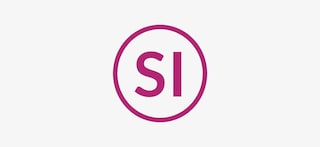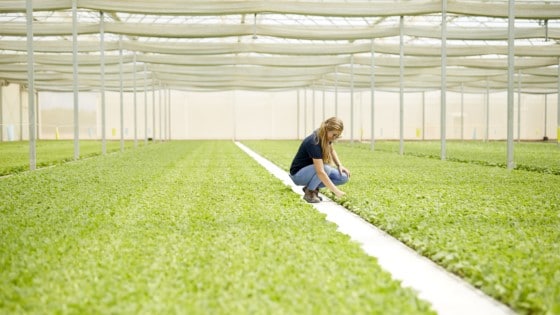Our performance at a glance
The ESG metrics on this page are explained in the relevant sections of our Integrated Report 2021 and in additional communications available on our website. Please also refer to the glossary.
The performance tables available on this page are extracted from our PMI Integrated Report 2021. Unless otherwise indicated, the scope of the data covers our operations worldwide for the full calendar year 2021 or reflects the status as of December 31, 2021. Aspirational targets and goals do not constitute financial projections, and achievement of future results is subject to risks, uncertainties and inaccurate assumptions, as outlined in our forward-looking and cautionary statements available on page 252 of our Integrated Report 2021. Entities acquired by PMI as part of our wellness and healthcare strategy during calendar year 2021 (Fertin Pharma A/S, Vectura Group plc., and OtiTopic, Inc.) have not been considered in the scope of our 2021 Integrated Report, unless explicitly stated otherwise.

Product impact performance tables
view data
Operational impact performance tables
view data
Fundamentals performance tables
view dataProduct impact
2R&D positions include scientists, engineers, technicians, and support staff. Comparable data for years prior to 2018 are not available as the scope of R&D positions changed following company organizational changes.
3IP5 jurisdictions are Europe (patents granted by the European Patent Office), China, South Korea, Japan, and the U.S.
4Direct spend focuses on materials used in the manufacture of our products; it includes tobacco leaf, direct materials, and electronic devices and accessories.
5Investments reflect research, product and commercial development, production capacity, scientific substantiation, and studies on adult smoker understanding. Figure does not include commercial deployment costs.
6Data reflect the number of factories operated and owned by PMI at the end of the respective year. Number of factories fully or partially dedicated to smoke-free products includes seven factories related to heated tobacco units production and one factory related to e-vapor consumables production. 2021 figures exclude one factory dedicated to wellness and healthcare products owned by Fertin.
7“SKUs” stands for stock-keeping units. References to the number of SKUs are based on the latest available data and categorization of our product portfolio into SKUs, therefore a minor restatement in previous years’ data is reflected. The figures exclude China and the U.S. Note: As part of maintaining share in combustibles, remaining competitive on product range in line with consumer preferences best positions us to retain access to adult smokers and increase our capability to switch them to smoke-free products.
8Data reflects status by the end of respective year. 2021 data excludes Belarus and the U.S.
9Excluding PMI Duty Free. Data reflects status by the end of respective year. 2021 data excludes Belarus and the U.S. For definition of low- and middle-income markets, see glossary.
10Includes flagship stores and small, large, and temporary boutiques.
11These indicators are calculated based on millions of units.
12These metrics are excluding PMI Duty Free and reflect the estimated number of legal age (minimum 18 years) users of PMI IQOS heat-not-burn product (see glossary). In 2021, we evolved our methodology to estimate the total number of users of PMI smoke-free products, in order to better reflect the number of users for which PMI HTU represented at least a portion of their daily tobacco consumption over the past seven days. 2020 data were restated accordingly. Unavailability of sufficiently granular data did not enable us to restate figures for years prior to 2020. We also fine-tuned our methodology to estimate the number of users who have switched to PMI smoke-free products and stopped smoking, in order to reflect the conversion rate of our total user base at year-end, and restated 2020 data accordingly.
13Data reflect the status by the end of the respective year. 2021 adjusted net revenues exclude the impact related to the Saudi Arabia customs assessments. 2021 revenues from wellness and healthcare (USD 101 million) are included in both smoke-free and total adjusted net revenues. See glossary.
2Total shipment volume includes cigarettes, heated tobacco units, other tobacco products, and e-cigarettes. In 2021, we evolved our minimum requirements for effective youth access prevention (YAP) programs in indirect retail channels.
2Our aspiration is to have eco-design certifications for all smoke-free devices which are launched as of the end of 2025. Given the long-term nature of this aspiration, we have developed internal metrics based on key milestones that will allow us to track our progress in the interim years leading up to our 2025 aspiration.
3For the definition of refreshed or repaired devices, see glossary.
4In 2021, the effective recycling rate is calculated as the actual recycling rate in Hungary and Japan, multiplied by the IMS coverage of these hubs plus the theoretical recycling rate in the newly established Russian hub, multiplied by the IMS coverage of the Russian market.
5Recycling rate: Percentage of the weight of each device that is recycled, weighted-average depending on device type and processing facility (includes 78% recycling, 8% incineration with energy recovery). 2021 data covers CIRCLE hubs in Hungary and Japan.
6In 2021 we defined the minimum criteria which must be met by each market to be considered as having a take-back program in place. We will begin reporting progress on this new indicator in 2022.
7Includes portfolio/volume mix and inventory movement. Includes shipping cases.
Operational impact
2We will begin reporting progress on this new indicator in 2022.
32021 data based on a total of 55,276 employees maintained in PMI’s central HR system.
4We measure the engagement of our workforce using the employee Net Promoter Score (eNPS), following a methodology similar to that which we use to measure consumer engagement. The score can range from -100 to +100.
5For definition of contracted employee and contractor, see glossary.
6PMI employees and contracted employees: 1 fatality in 2021; contractors: zero fatalities in 2021.
7Scope covers PMI’s working tool cars (representing 75% of PMI’s total fleet).
8Scope covers manufacturing facilities producing more than three billion cigarette equivalents annually.
9Our gender diversity data cover around 95% of PMI’s total workforce.
10For definitions of managers, directors, and senior leaders see glossary.
11Data as of March 11, 2022 (24 Company Management members, of whom 4 were women). See PMI Annual Report 2021 for further details.
12Data as of March 25, 2022 (13 members of PMI’s Board of Directors, of whom 3 were women). See PMI 2022 Proxy Statement for further details.
13The mean gender pay gap is calculated as the percentage difference between the sum of annual base salary, bonus, and stock options.
14This figure is an estimate based on the total headcount within functions where the primary skills required for employees in their daily responsibilities related to science, technology, engineering, or mathematics.
15Employees holding management roles in revenue-generating functions (i.e., functions responsible for core business objectives or profit and loss).
16The indicator represents the percentage of employees who responded “good” or “very good” to the question “How would you rate your current psychological or emotional well-being at present?” in our regular employee listening survey. The indicator was updated based on new information available, so a slight shift in previous years’ data is reflected.
2Includes all prompt actions raised and self-declared nonconformities reported for all contracted farms monitored for child labor. Read more on page 154 of the 2021 Integrated Report.
3The number of children estimated to be involved in these prompt actions is 1,609.
4Includes children of any age found to be involved in hazardous work.
5Includes light work only.
6Estimated data based on surveys that indicated that the farmer has an improved source within 1 km. Data excludes China.
7Scope is limited to farmers that provide accommodation to workers (approximately 8 percent of the total farmer base in 2021).
2Blue water refers to water used for irrigation, excluding rainfall.
3Water intensity is measured in cubic meters per million cigarettes produced equivalent. In 2021, we updated our methodology to account for the conversion factor of heated tobacco units to conventional cigarettes of 5:1 and have restated historical data accordingly.
4The 2021 crop season data were not available at the time of the publication of PMI’s Integrated Report 2021.
5Disposal to landfill includes sanitary waste, canteen waste, and waste which mandated by authorities to be disposed of in landfill.
6Scope: Manufacturing facilities producing more than three billion cigarette equivalents annually.
7Fines above USD 10,000 (or equivalent in converted currency). 2021 figure is a provision for two administrative offenses related to failure to comply with water resource use permit and availability of financial guarantee in Portugal. In both cases, PMI has submitted its opposition.
2Excludes electricity consumption from fleet.
3Emissions from PMI-operated IQOS stores are excluded from scope 1+2 emissions, as de minimis.
42021 figure includes carbon offsetting certificates purchased in our factories in Czech Republic, Lithuania, Mexico, Portugal, Switzerland, and our Operations Center in Switzerland.
5For further details on Scope 3 calculation please see PMI Value Chain Methodology. In 2021, we reviewed our carbon footprint model, taking into account more primary data from suppliers and updating our methodology, leading to more accurate figures for our scope 3 emissions. We have restated our 2019 and 2020 data according to the new model. Other figures that include scope 3 emissions have also been restated.
Fundamentals
2Total supply chain spend includes procurement spend and tobacco leaf sourcing spend.
3Indicator introduced in 2020. As of 2021, following the transition of our due diligence program, sustainable sourcing is determined based on a minimum threshold score of 45 out of 100 in EcoVadis (direct materials) or 125 out of 200 in RBA (electronics). All tobacco purchased by contracted farmers, thereby covered by PMI’s integrated production system is considered sustainable.
4Procurement spend excludes tobacco leaf sourcing.
5Suppliers’ criticality is evaluated considering spend segmentation and nature of component, as well as supply flexibility (single-source/not easily substitutable) as relevant. 2021 figure includes tier 1 suppliers of direct materials and electronics, tier 2 directly managed electronic suppliers, and tobacco leaf suppliers.
6In 2021, we transitioned our supply chain due diligence assessments to the EcoVadis and RBA platforms. This figure represents the number of completed assessments on these platforms to date. In 2022 we will work to expand the scope of the assessments to additional critical suppliers.
7Based on a score below 45 on the social or environmental theme of EcoVadis assessment, or the results of on-site audit from RBA. Comparable historic data not available due to transition of due diligence platforms in 2021.
8EcoVadis score ranges from 0 to 100, with a minimum threshold score of 45 demonstrating satisfactory sustainability performance.
9This figure includes 17 out of 23 of our electronic critical suppliers. In 2022 we will work to expand the scope of the assessments to additional critical suppliers.
10Due to COVID-19 restrictions, in 2021 it was not possible to complete on-site audits at each of the 42 sites.
11Data refer to parent companies.
2Excludes kretek business. While our internal rules mandate a unique code on every pack (hence 100% mentioned), some exceptions remain, which are managed and reviewed with the impacted markets on an annual basis.
3The number of training sessions delivered each year depends on specific needs and requests raised locally by law enforcement agencies. The significant increase in 2021 was driven by larger numbers of participants taking part in online training sessions.
4PMI pledged USD 100 million to PMI IMPACT. Goals related to PMI IMPACT are stated for the period 2016–2025.
Indicates metrics which are included in PMI’s Sustainability Index, for further information see PMI's 2021 Integrated report, pages 45-47.
This online content about our Integrated Report should be read in conjunction with PMI’s 2021 Integrated Report. The information and data presented here cover the 2021 calendar year or reflect status at December 31, 2021, worldwide, unless otherwise indicated. Where not specified, data come from PMI estimates. Please also refer to 'This report at a glance' on page 5 of the 2021 Integrated Report for more information. Aspirational targets and goals do not constitute financial projections, and achievement of future results is subject to risks, uncertainties and inaccurate assumptions, as outlined in our forward-looking and cautionary statements on page 252. In the 2021 Integrated Report and in related communications, the terms “materiality,” “material,” and similar terms, when used in the context of economic, environmental, and social topics, are defined in the referenced sustainability standards and are not meant to correspond to the concept of materiality under the U.S. securities laws and/or disclosures required by the U.S. Securities and Exchange Commission.




